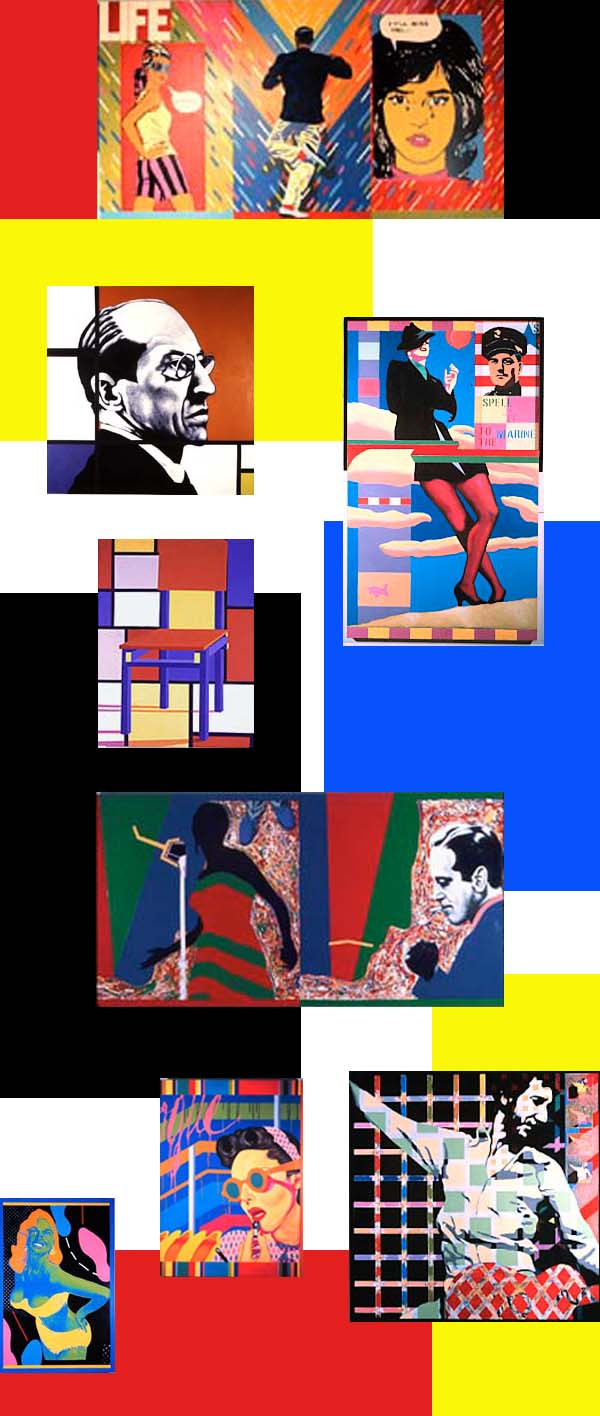|
|
|
| Rudolf Boelee's shocking art |
|
Canterbury Society of Arts, Christchurch
July 29 - August 9, 1981
Photographs: Gary Ireland
Review: John Coley , The Star, 5 August 1981 |
|
|
 |
|
| A work in Rudolf Boelee's exhibition at the Canterbury Society of Arts is called 'Dutch Earthquake', one of a pair of paintings showing a de Stijl chair embedded in a severe Mondrian - like grid of coloured rectangles. In 'Earthquake' the verticals and horizontals quaver slightly off perpendicular, producing an image that indeed looks as though its stability has been affected by a violent shake. Boelee's title doubtless refers to the tremors the Dutch master Mondrian's paintings sent through the art of the twentieth century, but it could just as well refer to Boelee himself for his big, bold and brassy exhibition has all the delicacy and restraint of a force 6 Richter scale earthquake. Walking into this show sets the adrenalin flowing. It is saturated with colour as biting as acid and which makes no apologies for its neon gaudiness. This is a good, strong show that reveals a painter analysing the art of his time while confidently taking from it the elements he needs to make his personal statement. His success is creating an extensive, consistent and arresting exhibition indicates his deep involvement with painting. It is especially noteworthy since Boelee received no formal art tuition. |
|
|
 |
|
| Rudolf Boelee was born in Rotterdam, The Netherlands and was young when the heart of that port was heavily bombed during World War 2. He recalls the city crowded with de Stijl architecture, and also dreary school lessons which left him with a distaste for art. In his teens he became a seaman, as did many young men raised in that great European port. Long periods at sea followed. The environment he knew best was the downtown, neon - lit, impersonal but invigorating crush of the busy seaport, the purple and pink of bars, saunas and other low - life places, the crash and flash of pin - ball alleys. Boelee brings this visual vitality to his paintings and weaves into them influences of op art, pop art and constructivist content he encountered in his ports of call and in Rotterdam. His achievement lies in his combination of these elements into works that are successfully eclectic. Together they constitute a voice that is Boelee's alone. Technically, his paintings have their rough edges, but they are confident, muscular and crammed with genuine, resourceful and often witty visual ideas, no mean achievement in a first one-man show. Make an opportunity to see this exhibition. |
|
|
 |
|
|
 |
|
|
|
|
|
|
|